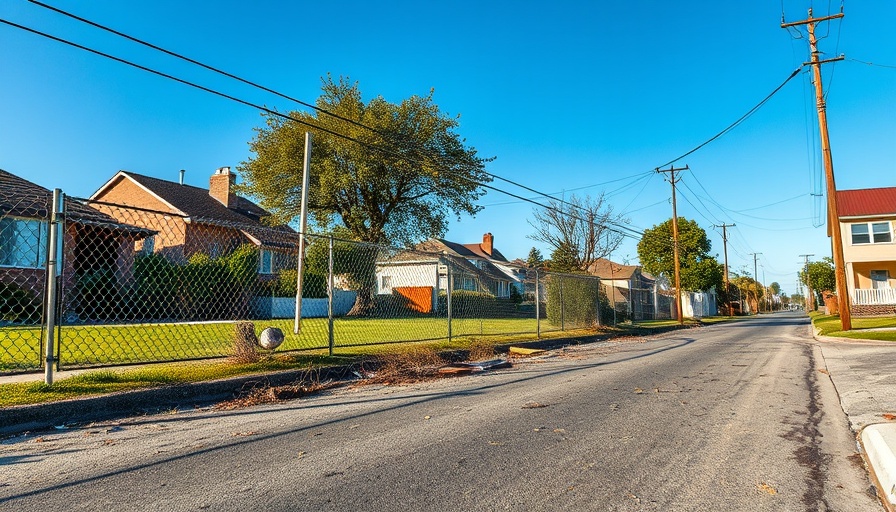
Tackling Speeding Issues in Southeast San Antonio
In the heart of San Antonio's Southeast Side, the Blue Ridge Ranch neighborhood is grappling with a pressing danger that has many residents living in fear. Crashes involving speeding vehicles have become a troubling norm, leaving a significant number of homes damaged and families apprehensive about their safety. With frequent reports of cars crashing into fences, houses, and even ditches, the call for action has been deafening. Neighborhood resident Musgray voiced her frustrations, saying, “We’ve been asking for help... but we’re just hitting walls.” This sentiment is echoed among other members of the community, who jointly seek solutions to curb the reckless driving.
The Power of Community Action
The persistence of the Blue Ridge Ranch community in seeking change highlights the importance of collective action. Residents have spearheaded efforts that include petitions and surveys aimed at attracting the attention of city officials. Despite their repeated attempts for assistance failing to prompt immediate responses, their recent success in garnering media attention through KSAT has prompted the city’s Public Works Department to finally acknowledge the issue. This showcases how community engagement can serve as a powerful tool in pursuing necessary infrastructure changes.
Upcoming Infrastructure Improvements
The San Antonio Public Works’ announcement to install speed bumps along Lakeland Drive, Lake Tahoe Street, and Lake Meadow is a vital response to the community's concerns. While the installation of the speed bumps is slated for the near future, residents are advocating for additional measures, including clear speed limit signs and possible roundabouts. As Musgray pointed out, “The exploding growth in the area is contributing to the speeding; it will likely get worse,” highlighting the urgent need for preventive strategies given the rapid development in Southeast San Antonio.
The Broader Implications for Local Safety
In many cases, speeding is not merely a nuisance but a public safety hazard. The presence of joggers and young families in the area makes this situation even more critical. Concerns are compounded for parents like Musgray, who fear for their children's safety as they walk to local parks. When cars are observed exceeding the speed limit by 30 miles per hour, the risk of serious injury or fatal accidents increases dramatically, drawing attention to the broader implications of traffic-related safety. Understanding the dynamics of speeding in residential neighborhoods is crucial for urban planners and local government to ensure the safety of all community members.
Future Directions and Community Responsibility
As the traffic engineers evaluate the proposed changes, the neighborhood stands at a pivotal point. Residents are urged to continue their involvement in the decision-making processes that affect their safety. The collaboration between community members and local government can help to ensure that the necessary resources are allocated to protect residents effectively. Advocating for further infrastructure adjustments such as speed limit signs and traffic circle installations will also be vital in establishing long-term safety enhancements.
Conclusion and Call to Action
San Antonio's Southeast Side story serves as a reminder of the local struggles many communities face in addressing safety issues related to traffic. It is essential for residents, local officials, and city planners to work together toward the shared goal of a safer environment for all. We invite community members to stay engaged, participate in meetings, and voice concerns to local representatives to make their streets safer. The broader implications of neglecting these issues could foster environments where risks to life and property continue to mount. The time for action is now, and every voice matters in this critical conversation on public safety.
 Add Element
Add Element  Add Row
Add Row 



 Add Row
Add Row  Add
Add 


Write A Comment